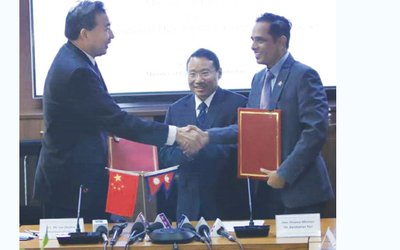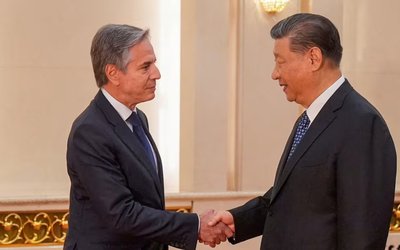
Allow me to, as a non Monetary Economist, points out certain fundamentals in the making of our Monetary Policy. There is a need to provide a vision for our future Monetary Policy, both midterm and long term so that there can consistent policy coordination with fiscal monetary and capital market policies.
A currency Union is fine if we are a significantly trading nation, especially exporting because it provides exchange stability. Have we calculated the loss of revenue from under invoicing and the loss of currency from its retention overseas? I submit it is humongous. Currency union means loss of exports and opportunities for import substitution especially in agriculture, manufacturing. It is tantamount to subsidizing Indian exports by the amount of the over valuation of NPR. It is also tantamount to penalizing exports. In short, it supports BOT and Current Account deficits that lead to structural BOP deficit. And drawing down of our $ holdings to pay for IRS will cause interest to rise as NRB buys NRs and thus reduces money supply
Currency Union, further, is tantamount to importing inflation plus. The ' plus' is equal to the inefficient transport cost of 2 pc or more created that is by the transport cartels which need to be to be added to the Indian inflation. These cartels do not wish to pick up our imports from India and deliver our exports to India and similarly grant reciprocal rights of passage to Indian transporters forcing transshipment needs. Freedom of transport and transit would benefit Nepal with greater service revenue in IRs. But these cartels do not wish to compete forcing Indian transporters to unload at the custom points causing additional transshipment costs, if we wish Through B/Ls for our exports freedom of transit and transportation will facilitate it.
Currency union means dollar appreciation in line with India's even though our B0T with Us and d our dollar reserves are good. You may note that both India and China to not, any more, maintain a pegged interest rate. Why? So that they can have full control of their money supply i.e. has monetary sovereignty. Let us ask: what happens to this currency union if India, like China, moves towards full capital convertibility. I submit it will collapse.
Additionally, I submit the point that because we are pegged, it means that our monetary policy does not respond to local realities regarding having our household saving more and more private sector investments, especially the need of the MSME sector.
Let me move to the vision I have on the Question: What kind of monetary policy would I like for Nepal? Where household savings are maximized -- this calls for an attractive savings rate that is higher than the inflation rate? Where private investment in maximized to add to national capital formation --this calls for lower interest rate for investors with minimum spread rates for different kinds on investment loans and discouraging corporate to buy treasury bills and Government bonds which are income tax exempt, which needs be curtailed with a much more liberal FDI regime for all sectors and all businesses. Households must have more Savings instruments such as mutual funds, which should also be made income tax exempt as with pensions and health.
For all this to happen, it is best to have a regime of low income taxes in Nepal with no dividend and capital gains tax: this will make it an attractive investment destination and thus speed up capital accounts convertibility And fully integrate with the Indian economy with both freedoms, namely capital and labor mobility
However, this dream can’t be realized if we maintain a currency union which free labor movement where Remittance to India is estimated at around $3 billion per year; nearly 50% of overseas remittance earnings! And equal to the $ sold for IRs to keep the currency pegged!
Finally, refer our audience to a brilliant study by Dartmouth College's Prof John Shambaugh on the pros and cons of a Currency Union and appeal to the Honorable Governor to fund independent empirical research in our national context using the article as a guide.
Excerpts of the statement delivered in an interaction with bankers.

Prof. Madhukar SJB Rana
Executive Director, SAIM Leadership & Executive Development Center and Former Finance Minister . He can be reached at madhukarsjbrana@gmail.com
- People Public Private Partnerships
- Nov 29, 2018
- An Alternative Meaning Of Inclusion And How Nepal Should Strategize
- Nov 20, 2018
- Nepal: A Country In Transition
- Aug 12, 2018
- A Macroeconomic Assessment Of The 2018/19 Budget
- May 30, 2018
- An alternative Meaning Of Inclusion And How Nepal Should Strategize Development 2018-2025
- Apr 06, 2018















